Contents
- 1 The Strategy Guide: From Novice to a “Shark”
- 2 What Is Poker?
- 3 The Objective of Poker
- 4 Where Did Poker Originate From?
- 5 How to Setup & Play Basic Poker
- 6 The Key to Success
- 7 Improving Your Online Poker Win Rate
- 8 Poker Tournament Strategy
- 9 Online Poker vs Live Poker
- 10 Poker Mentality and Mind Games
- 11 Warm Up
- 12 Advanced Poker Tips to Improve Your Game
- 13 When to “All-in” and When to “Fold”
- 14 Worst Poker Hands
- 15 The Best Poker Strategy
- 16 Play for the Long Term
- 17 Develop Your Skills
Welcome to the Ultimate Poker Strategy Guide where you’ll find everything you’ll ever need to know to become the best poker player you can be.
Whether you’re new to poker, dabbled in it with friends, or a seasoned veteran with some cash winnings under your belt, there is something useful for everyone.
No matter how much you know about poker, we’re confident you’ll have some “Aha” moments while looking through all the comprehensive poker strategies contained in this Poker strategy bible.
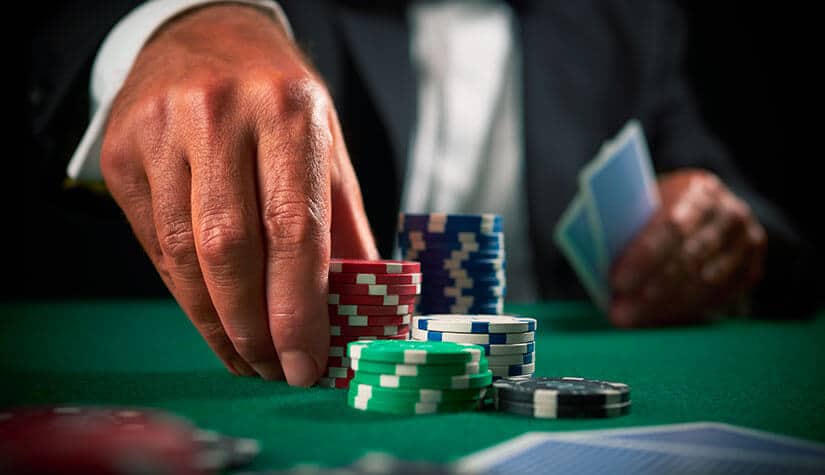
There is so much to learn when it comes to poker. The terms are surprisingly the easiest side of poker. Crunching the odds and probabilities and keeping your cool are far more important and understandably more difficult to master.
That’s why beginners are usually a little overwhelmed, even intimidated, when it comes to learning about the game of poker. Having been there ourselves, we know exactly what it is that beginners need to know and how best to teach them.
That’s why we’ve developed this Ultimate Poker Strategy Guide as both an in-depth study suitable for veteran players, as well as an easy-to-read and beginner-friendly guide that is divided into separate lessons that you can access at any time via the contents table on the right.
The Strategy Guide: From Novice to a “Shark”
This extensive poker guide is written in such a way that we’ll start off with the simple stuff first and work our way to the ultimate poker strategy right at the end. In this guide we will cover a number areas, including:
- How poker began
- Key terms used to date
- Strategies for beginners & pros
- How to crunch the numbers
- Go from freshman to professional
So, depending on your current level of poker experience, you can start right at the beginning where we’ll teach you just enough to get your poker training wheels off.
Alternatively, you can start near the middle where we’ll guide you towards the deeper waters and begin to explore different poker strategies to give you an edge over your friends and colleagues.
If you’re looking to become The Shark and prey on other fishes, then go right ahead and jump to The Best Poker Strategy at the end.
Ideally, you will want to take your time and work your way through this entire guide. We assure you that there are plenty of poker treasure strategies and pro tips to be found throughout this guide.
Before we dive into the poker strategies, tips, and guides, let’s first take a brief moment to learn about what the wonderful game of poker actually is.
What Is Poker?
Poker is by far the most exciting and popular card game to have ever been created and is enjoyed by about 40 million players around the world.
The poker pep talk: Tough times don’t last, tough people do.
It’s an easy game to pick up once you’ve learned the basics, but it takes serious dedication and time to master this fantastically strategic game of poker.
Luckily, since there is so much enjoyment to be had while playing this game, the last thing you need to worry about is you getting bored before being able to master the game. In fact, the only thing you might need to be concerned about is it being too addictive!

So, what exactly is poker? There are many variations of poker, but all of them share very similar traits: they are all played using a traditional deck of 52 cards.
The cards are usually ranked in the following order:
- The “Two”, commonly known as deuce, as the lowest ranked card…
- Then all the way up to “Ten”, “Jack”, “Queen”, “King”…
- And the “Ace” as the highest ranked card;
Unlike other card games, the suits are all equally ranked in poker; finally, the winner is determined by the player with the best five card hand.
The Objective of Poker
The main objective is to produce a stronger hand than your opponents and win the money. In poker’s case, that money is known as the “pot”, which is the money in the middle of the table that is accumulated via the wagers made by all the participants of that hand.
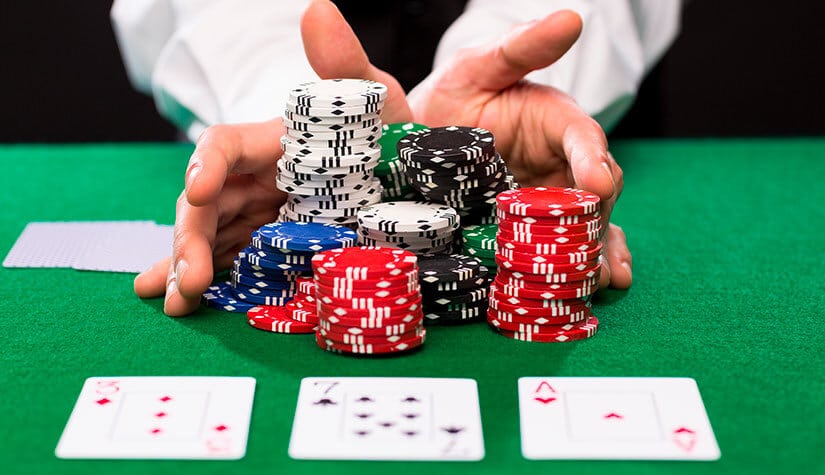
First things first. In order for you to be able to make the best 5 card hand possible, you’ll first need to know how poker hand ranks. Naturally, we have a very detailed Poker Hands Ranking Guide too. So, make sure you read that guide along with this one.
Where Did Poker Originate From?
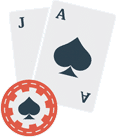
As far as card games goes, the Chinese were recorded as the first people in history to ever play card games in around 950. However, that card game was not played with a deck containing 52 cards that resembled the modern-day deck of cards, and was in fact more akin to dominoes than poker. Therefore, the actual appearance of a 52-card deck didn’t occur until 1377, as recorded by a SwissMonk, John of Rheinfelden.
The rumble: Did you know that poker’s early predecessors originated in China around 950
The majority of the card games played in 1377 had no similarities to poker whatsoever. They were either simply card games just for recreation, or there were games that involved betting, but never a combination of both that resembled poker in any shape, way, or form. Then, the French rolled up their sleeves and came up with four (4) different suits in 1480. Many games have been suggested as the originators of poker, including:
- Poque – France
- Poca – Ireland
- Brag – Britain
- Primero – Spanish or Italian
- Poche – German
For poker to shape up completely, people had to wait for the advent of riverboat gambling on the Mississippi River in the 1800. It was around this time that card games most closely resembling to poker were first played that also displayed similarities in culture. Without a doubt, this was the time that poker as we know it was invented.
It was around this time that the very first game of modern poker was first played in the Old West – “Stud Poker”. Stud was played at gambling houses, saloons, and riverboats along the Mississippi river by professional card players, gamblers, gunfighters and cheats.
- 950: the first predecessors of poker appear in China
- 1377: John of Rheinfelden invents the 52-card deck
- 1800: Poker is played on the Mississippi River and Stud Poker is invented
- 1920s: Texas Hold’em is invented
- 1967: The Golden Nugget in Las Vegas gives poker a shot
- 1970: Mob bosses Benny and Jack Binion inaugurate the World Series of Poker
- 1998: Texas Hold’em begins building global recognition thanks to online gaming
As the Old West died out, with it Stud poker, making way for the most popular form of Poker today – Texas Holdem Poker, invented around 1920 and, unsurprisingly, originated from Texas. It was from there that a Texan named Crandell Adderley saw the business opportunity in hold’em.
He brought the game over to Las Vegas where the Golden Nugget was the first Casino to give it a shot in 1967. However, the Golden Nugget then was not the Golden Nugget with a great reputation as we know it, and was not on the legendary strip.

Fast forward 3 years to 1970, father and son duo, mob boss Benny Binion and Jack Binion, bought the Gambling Fraternity Convention and changed its name to The World Series of Poker.
It was thanks to the WSOP tournaments that poker started to take off, but it wasn’t until 1998 when a site that offered real money poker play, planetpoker.com, really helped spread Texas Hold’em to the masses.
Shortly after, more and more sites popped up, including partypoker.com, Full Tilt, and PokerStars – the biggest poker site in the world.
The combination of these highly successful online poker sites and WSOP continues to bring poker to the masses, with more and more media coverage on multi-million dollars tournaments played by big name poker pros like Daniel Negreanu, Phil Hellmuth, Jason Mercier and more, as well as celebrity poker players like Dan Bilzerian. That’s our little poker history lesson covered, let’s move on to the fun stuff. How to win at poker!
How to Setup & Play Basic Poker
Before we even start to explain any basic poker terms or strategies, we first must first get you up to speed about how a basic poker game is set up and how it’s played at the very basic level. Grab some friends and sit in a circle. It doesn’t even have to be at a table. Sitting on the floor will work just fine too. In this chapter you will quickly find out everything you need to know about the:
- Dealer
- Blinds
- Pre-flop
- Flop
- Turn
- River
- Showdown
The Dealer

Someone is allocated as the “Dealer”, usually signified by placing a round disc with the letter “D” on it just in front of that player, so everyone knows who the dealer for that round is. Another name for the “dealer” position is the “button”. The “dealer” is changed after each hand in a clockwise position.
So, if you’re the dealer for this round, then the person to your left will be the dealer for the next round. Generally speaking, the dealer position is the best position because you get to act last (make a bet), allowing you to monitor everyone else’s actions first. The only exception to this is on the very first round of betting where the “blinds” will act as the “button”.
The Blinds

Just like the “dealer”, each hand also requires 2 designated “blinds”. These are the 2 players to the dealer’s left. The one to his immediate left is the “Small Blind”, the one to the left of that person is the “Big Blind”. These 2 players are required to put up compulsory bets before any cards are dealt to get the “pot” started and to give players something to aim for.
The “blind” amount is determined before the start of the game, and can be as low as $0.10 for the small blind and $0.20 for the big blind. The most common value for blinds are $1 and $2, and we’ll use this amount for our example. The small blind is always half of the big blind’s amount.
Dealing the Cards
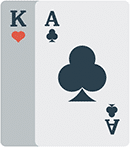
After the small and big blinds have been posted, each player is dealt two cards face-down. These are known as “hole cards”. As “Aces” is the highest valued card in poker, the best possible “hole cards” any player can be dealt is a pair of aces.
The very first card is dealt to the player to the left of the dealer, the “small blind” position. You then continue to deal one card to each player in a clockwise position until every player has 2 hole cards.
Pre-Flop
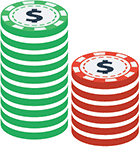
After everyone has received their hole cards, the first betting round, known as “pre-flop”, begins. The reason why it’s called “pre-flop” is because the very next stage after this 1st round of betting is the dealing of the 3 community cards, known as the “flop”. Since this round of betting precedes that, therefore it’s called “pre-flop”.
The first player to act is the player immediately to the left of the “big blind”. This player, after checking his hole cards, can decide between 3 actions:
- to “call” – they post the same amount as the big blind
- to “raise” – to bet an amount greater than the “big blind”
- to “fold” – you give up and discard, also known as to “muck”, the cards facedown, and you sit out for the rest of the game until the next hand is dealt.
Once every person to the left of the “big blind” has taken one of the three actions, it is now the small blind’s turn to take his or her action. If everyone else before them “called” the big blind, which, in our example is $2, the “small blind” player can either:
- “Call” and bet another $1 dollar to match the $2 bet (big blind) because she/he had already posted a $1 (small blind);
- “Raise” as, let’s say, the small blind raises the bet to $3 dollars, in which case she/he has to bet another $2.
- “Fold” at which point the small blind just opts out of the game by leaving their cards face down and pushing them to the center of the table in front.
Now, it’s the “big blinds” turn to take action. Let’s assume he “calls” the $3 bet. Since he’s already posted $2 for the big blind, he just has to post another $1 to match the current $3 bet.
This betting round must go around the table once more because the current max bet is $3, where as all the other players only “called” the $2 bet. Therefore, everyone has to either “call”, “re-raise”, or “fold” until all bets are even (matched).
Let’s assume that everyone “calls” the $3 bet. At this point we can move to the next round of betting, called the “flop”.
A quick note: The maximum amount of “raises” per round is usually 3 or 4, depending on the poker site that you play at. Once the 3rd or 4th “raise” has been made, the remaining players can only either “call”, to match the new max bet, or “fold”.
The Flop

Now that the previous round of betting has finished, it’s time to deal 3 community cards, known as the “flop”, face up into the middle of the table – also known as the “board”. Unlike “hole cards”, these 3 cards can be used by any of the remaining players, together with their “hole cards” to create the best possible 5-card hand.
This betting round is slightly different to the previous round where there were two forced bets already on the table, the small and big blinds. As there are no current bets, the first active player to start the betting round only has 2 choices instead of 3: “check” or “bet”.
- “Check” essentially means to neither “bet” or “fold”. You’re passing the decision making to the next person to take action – the person to the left. If everyone “checks”, then this betting round is over, and we move to the next round of betting.
- “Bet” means the same as the previous round. You can choose an amount you wish to “bet”, then everyone else will either have to “call”, “raise” or “fold”.
Let’s assume that the first active person decided to “check”. The decision making is then passed on to the person to his/her left. This player decides to “bet” $2. Now, all the remaining players, including the 1st active person who just “checked”, will have to either “call”, “raise” or “fold.
Once everyone has taken their actions, and all the bets are matched, we more on to the next stage – The Turn.
The Turn
A 4th card, the “turn”, also known as “4th street”, is dealt face up into the center of the table next to the flop. Now, the 3rd betting round begins, and it follows the exact same format as the previous betting round.
Like before, after everyone has had an opportunity to take at least 1 action, and the bets are all matched (unless everyone “checked”, then no additional bets were made), we move on to the next round.
The River
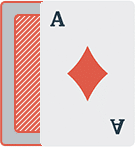
A 5th and final card, the “river”, also known as “5th street”, is dealt face up into the center of the table. Another betting round, just like the last one, commences. By the end of this betting round, if there are two or more remaining active players, we’ll proceed to the next stage known as the “showdown”.
It’s probably a good time to mention now that at any point up until now, if only 1 active player remains, then that player is the winner, and s/he is awarded the pot.
The Showdown
As the name suggest, it’s time to find out who the winner is. In order to do this, players need to reveal their hole cards to see who has the best 5-card hand, and therefore is the winner.
Depending on which poker sites you play on, there are two rules to dictate who has to reveal their hole cards first:
If no one made an aggressive move in the last betting round (everyone checked), then the person who last made an aggressive move in the betting round before that has to reveal their cards first. The best hand wins the pot.
Hey you: If you’ve forgotten the poker hand ranking order, it’s a good time to refer back to our Poker Hands Ranking guide.
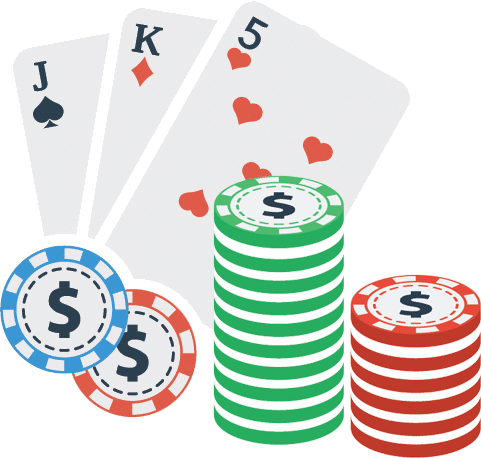
It’s worth noting now that your best 5-card hand might not even include your hole cards. In other words, your best possible 5-card hand was made entirely from the cards on the board, this is also known as “playing the board”. If all players in the showdown stage plays the board, then they all have the same 5-card hand, in which case the pot is divided evenly among them.
It’s worth noting now that your best 5-card hand might not even include your hole cards. In other words, your best possible 5-card hand was made entirely from the cards on the board, this is also known as “playing the board”. If all players in the showdown stage plays the board, then they all have the same 5-card hand, in which case the pot is divided evenly among them.
And that, ladies and gentlemen, is the basic game of poker. You should now be able to start playing poker without any problems whatsoever. However, if you wish to do better than “just” play, make sure to continue reading the rest of this guide to take your poker game to the next level!
The Key to Success

So, assuming you’ve read Lesson 1 and you understand the basics of poker and its rules, it’s time to kick it up a notch. Don’t worry, there won’t be anything complicated in this lesson.
Just simple and basic poker strategy that you’ll be able to apply to your game right now and immediately give yourself an edge over the competition.
Poker Mathematics Basics
To become a good poker player, it is vital to understand the “outs”, which are the number of cards that could improve the player’s hand and counting outs, multiplying that by two and by adding one, it gives players the percentage shot they have of hitting.
Remember: If you don’t know who the target on the table is, it’s probably you. When you begin to play against number-crunching pros, you will realize that poker is not necessarily kind to novices.
Experience and a great knowledge of the basic poker strategy also enable players to figure out the pot odds. Odds becomes meaningful once it is translated into calculated, rational betting, which confirms that the most important basic of poker is maths skills. Here’s an example of some the odds you might want to crunch:
| Your Hand | Hand Hoped For | Outs |
|---|---|---|
| Pair | Three of a Kind | 2 |
| Two Pair | Full House | 4 |
| Inside Straight | Straight | 4 |
| Overcards | Pair | 6 |
| Open-ended Straight | Straight | 8 |
| Four Flush | Flush | 9 |
| Straight/Flush Draw | Straight/Flush or Better | 15 |
This is just an example of the possible outcomes. Poker has a virtually inexhaustible variety of hands. Well, that’s an overstatement.
The number of 52-card deck combinations are 2,598,960. There is a lot to account for, of course, including the fact that your opponents have their own hole cards and that some of these cards have been folded as part of the betting process. Let’s have a quick look of what your starter odds to draw a specific combination of cards are:
| Poker Hand | Chance to Get | Odds of Happening |
|---|---|---|
| Royal Flush | 0.000002% | 1 out of 649,740 |
| Straight Flush | 0.000015% | 1 out of 72,193 |
| Four of a Kind | 0.00024% | 1 out of 4,165 |
| Full House | 0.0014% | 1 out of 694 |
| Flush | 0.002% | 1 out of 509 |
| Straight | 0.004% | 1 out of 255 |
| Three of a Kind | 0.02% | 1 out of 47 |
| Two Pairs | 0.05% | 1 out of 21 |
| One Pair | 0.4% | 1 out of 2 |
| High Card | 0.5% | 1 out of 2 |
Some cards are natural winners but it also helps to know what their actual odds of success are. More interestingly still, you are probably wondering what the odds of drawing these good stating hands are. Here is a statistical breakdown of some of the cards:
| Starting Hands | Odds | In percentages |
|---|---|---|
| Any specific pair | 220-to-1 | 0.45% |
| AA or KK | 110-to-1 | 0.90% |
| Any non-specific pair | 82-to-1 | 1.21% |
| Suited cards, jacks or better | 55-to-1 | 1.81% |
| Suited cards, 10 or better | 33-to-1 | 3.02% |
| Any pair | 16-to-1 | 6.25% |
| One or more Aces | 6-to-1 | 16.60% |
| Two suites cards | 3-to-1 | 16.60% |
Poker Discipline Basics
Disciplined players understand that they are not perfect and that they will make mistakes. But, as long as they learn from those mistakes, they will continue to get better and better, to the point where they’ll know when to play and when to quit.
Apart from understanding the basic poker rules, another important skill to have is the understanding of player psychology. Poker pros always strive to determine what the opponent has, what the opponent think they have or what the opponent think they think he has. The answers to what the opponent think you have can be manipulated by fast playing, slow playing, and bluffing to throw his predictions off.
Poker Risk vs Reward

Once players are acquainted with the basics of poker, it is important to understand the concept of risk versus reward. Players are often willing to take the risk should the reward be worth it, but only if the predictable return is higher than the risk.
By following a basic poker strategy, poker players need to understand that in individual games, every chip must be valued at the table. The main focus should be on making correct plays and, for example, if a buy-in is made for $15 the player should be comfortable with taking a 52% chances of doubling the buy-in, to $30 if it means at the same time a 48% chance that he could lose his $15.
Part of the basics of poker is to realize the risk versus the rewarding nature of poker outside of the poker room, by knowing how much money is needed to play and determining upfront the amount they need to reserve for covering living expenses. While the core basics of poker are important, players are required to recognize that they must be more risk-averse with their complete bankroll than the stack on the poker table.
Basic Poker Strategies
Apart from the four basic poker keys, mental strategy is another great way to enhance your knowledge and use of the basic poker strategies. The most important basics of poker to master first is:
- The art of electing starting hands
- Employing pot odds
- Assertively betting winning hands.
Situational judgment skills cannot the studied like the basic poker rules and the only way to gain these skills are to think for yourself. Analyze the game, think what could have been handled differently and what was done to achieve victories.
Once the basic poker strategies are mastered, players can then turn their attention on learning and understanding the art of poker deception. Poker is not a one-dimensional game where all it takes to win is good mathematics. The other aspect, and the one that makes poker as exciting and challenging as it is, is the psychological aspect. Once again, some basic number-crunching would help, but in the meanwhile you can remember the following rules:
- The outs can vary between 2, 15 and more
- Your odds of completing a winning hand are at their lowest at the Flop to Turn
- The Turn & River promise the biggest statistical odds of success, but they care the largest risk
The psychological warfare in poker includes slow playing, semi-bluffing and bluffing. In low-stakes limit games, bluffing is not as effective as it is rare that a hand not be called to showdown, but it most certainly is a powerful tool in high limit games.
Semi-bluffing is bluffing when you hold a drawing hand, and slow playing is a way of deceiving the opponents into thinking your hand is weak when it is a powerhouse.
Simply put, if you master both poker basics, which are mostly mathematics-oriented, as well as player psychology, you’ll be well on your way to becoming a top-notch poker pro.
Improving Your Online Poker Win Rate

Top poker players share tips in interviews with other players and the majority admitthatit is becoming progressively more challenging to win money from poker, particularly online.
This is primarily due to the fact that the internet is now flooded with more and more online poker strategies and information about how to win at online poker, therefore players are becoming more knowledgeable and skilful, and as a result, making the game far more competitive and fun.
For this reason alone, it has become critically important that poker players give themselves as much advantage as possible by following proven winning strategies. Thankfully, since you’re already reading this, you’re already putting yourself in the best winning position possible.
So, how exactly can you improve your win rate when playing online poker? There are many ways you can do this, including knowing what to look out for, taking advantage of opponent’s mistakes, and creating opportunities for yourself.
Below, we’ll start with one of the most important online poker strategy tips for improving your chances of winning:
Know Your Win Rate to Improve Your Win Rate
The first step in improving your online poker win rate is to keep records of all your poker activities, such as the sites you played on, at what time, the duration of each session, the variants limits and stakes.
To help facilitate this process, you can use a poker tracking software that is compatible with most of the premium online poker sites and players can import hand histories. Players who prefer to keep their own records can use several programs and spreadsheets, allowing filtering options to ensure easy compare of important aspects.
Quick update: Do keep in mind that partypoker.com recently introduced an update that prohibits the use of most third-party software.
Compare Notes to Improve Your Winning Online Poker Strategy
So, you might be thinking what was the purpose of keeping tabs on your poker activities. Well, it’s so you can compare them afterwards to identify certain factors that might be enabling you to win more often.
Try to see if you’re performing better at short-handed tables, or maybe you have more success at heads-up or full tables. Ask yourself the following questions:
- Are you finding it easier to win at certain sites compared to others?
- Does the stake have any impact on your win rates?
- Do you win more when playing FL hold’em compared to Omaha?
By identifying all these things, you’ll better understand what your strengths and weaknesses are, and therefore be in a better position to find the winning online poker strategy that works best for you, which should see your poker win rate soar.
Multi-Tabling
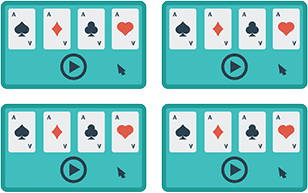
One way to boost your online poker win rate is to master the skill of playing and winning at multiple online poker tables simultaneously. By conquering the skill of multi-table play, it is possible to double the win rate per hour.
Players new to multi-table play should start slowly and begin with two tables. Then, once mastered, can slowly increase one table at a time, as long as they are still able to sustain the same level of play across all the tables and are seeing profit.
How to Win at Online Poker – Get Familiar with Different Poker Variants
Online poker players mostly focus on Texas Hold’em exclusively, especially when they first start playing. By expanding their knowledge and being proficient in a greater variety of poker games, they are giving themselves more opportunities to take advantage of different situations.
For example, you might find yourself playing Omaha Hi-lo with some highly skilled individuals that would likely end with a low win rate. No problem, you can try your luck on 7 Card Stud instead. If you only knew how to play one type of poker, you are severely limiting their options when it comes to making money from online poker.
OPA Advises: Remember to study more poke versions and study the competition for iterations such as 7-Card Stud and Omaha
Of course, money aside, knowing more varieties of poker also means you’ll be able to enjoy poker even more. Now who doesn’t want that, right?
Take Breaks

Given how fun and addictive poker is, many players forget to take breaks every now and then.
Even professionals would advise you to take five minute breaks every hour.
This will ensure that you mind remains sharp and fresh, enabling you to better make the correct decisions at critical moments.
There’s even a saying, “no wins for the weary”, so, regardless how great a poker player you may be or how effective your winning online poker strategy is, it’ll be difficult to follow through with that online poker strategy when you’re tired. You’ll also be less likely to read your opponents correctly, which is vital in giving yourself an edge.
So, make sure you only play poker online when you’re feeling 100% in order to maximize your chances of winning or else find some free mobile poker apps that suits you where you can practice during times away from the computer or real table with some valuable time to kill.
Poker Tournament Strategy

So, you’ve finally made it to your first tournament or possibly even hosting your own tournament amongst friends. For some, this could be an eye-watering amount of money, or maybe it’s the title you’re hunting down but for everyone, luck alone isn’t enough to get them to the final table, and that should be your highest priority, second only to rightfully snatching that title with the prize money to match.
What you need is a solid tournament poker strategy and as usual, we’ve covered the basics for you. We will take an in-depth look at the main components that both novice and intermediate poker tournament players need to focus on to become a tough tournament opponent that nobody wishes to see at their table.
Understanding the Early, Middle, and Late Stages
Any player can win a poker tournament by simply getting the perfect cards at the right time, or when playing against awful poker players. All of us know that the best tournament poker strategy is aggression. This is especially true with an online poker tournament strategy.
However, how can you be more consistent in winning poker tournaments if the cards aren’t in your favor or if you’re playing against decent opponents? The best tournament poker strategy is to recognize the three stages of any poker tournament and to have a distinct tournament poker strategy for each of the vital crunch times during a poker tournament.
Early Stages
There are two approaches you can use when playing the early stages of a poker tournament. The first is the conservative approach. This will require you to play tight, buckle down, and patiently wait for the right spots. The main objective is to preserve your chip stack for the late stages of the poker tournament without having to risk any dangerous all-in confrontations.
OPA Advises: Play conservatively until you are able to afford yourself a looser, more aggressive play style
This does not necessarily mean that you can’t play premium hands, but you need to avoid investing most of your chip stack if you don’t have a very strong hand. The advantage of this tournament poker strategy is that it will reduce your beta: it’s unlikely that you’ll build a huge chip stack in the early stages, but you will also be avoiding staging an early exit.

The second approach is maximum aggression in the early stages where your primary goal is to double up early. You can achieve this by speculating with a wide range of hands, either in or out of position. The secret to this approach is to become a balanced loose player. You can’t afford to be a calling station. Playing loose will only be justified if you are willing to increase the aggression to compensate for weaker hands.
But while playing loose, you need to remember that while passive play is the worst online poker tournament strategy, going all-in and becoming a maniac without reason is almost just as bad. Aggressive, loose players will look to build a huge chip stack during the early stages by raising and re-raising regularly, but mostly during the pre-flop and flop stages when betting is cheap.
Middle Stages

If there is a single best tournament poker strategy to winning poker tournaments, it can be found in the middle stages of play.
Most players will start to tighten their game in the middle stages, afraid to risk their chips while edging towards a payout.
While it’s inexpensive to gamble with low blinds in the early stages, the rising cost of blinds causes most poker players to re-consider the value of venturing with marginal hands.
Should this occur at your table, you should take the opposite approach. You will need to see the middle stages as a make or break scenario for your tournament life. You must build a bigger chip stack as you head into the high blind late stages of the tournament by any means necessary.
You must re-raise pre-flop, raise in position, and play aggressively, especially when playing against tight opponents with medium stacked chips. You will also be required to pull the occasional bluff on both the turn and river on a table that turns scary after the flop has been dealt.
OPA Advises: You must re-raise pre-flop, raise in position, and play aggressively, especially when playing against tight opponents with medium stacked chips.
If you can successfully steal 2 or 3 big pots while holding the worst hand, and collect more without a battle by constantly raising in position, you will accumulate enough chips for the later stage.
Late Stages
The late stage is all about aggression, and you will need to pick on medium stacks being held by tight players. This is the best strategy to use during the late stages of a poker tournament. Alternatively, you can gamble with short stacks that will be forced to make a desperate all-in. There’s only one rule to follow, avoid a massive gamble with another player with a huge chip stack.
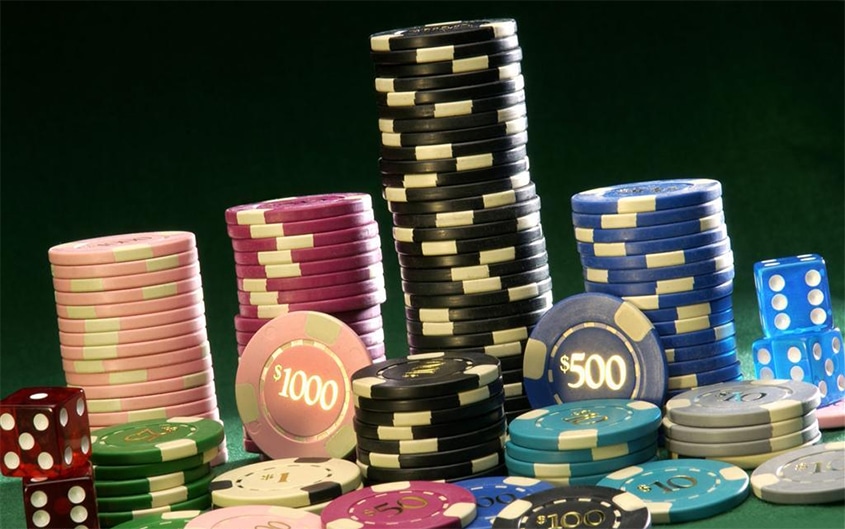
When it comes to the best tournament poker strategy, you never want to have your tournament life at risk by a single deal of the cards, if you can avoid it. Therefore, it’s best to only challenge other players who are likely to fold to your aggression.
With a huge chip stack, you can easily intimidate the other poker players and losing a few coin flips won’t be too detrimental. Should you find yourself short-stacked, utilize the best opportunity to go all-in. Do not ever allow yourself to drop below 5x the big blind, regardless of the cards.
OPA Advises: Never put yourself in a position where you depend on a single card, if you can avoid it.
The late stage is considered the most random part of any poker tournament. However, if you managed to build a decent chip stack during the middle stages, you’ll immediately maximize your chances of placing in the top-tier payouts.
Online Poker vs Live Poker
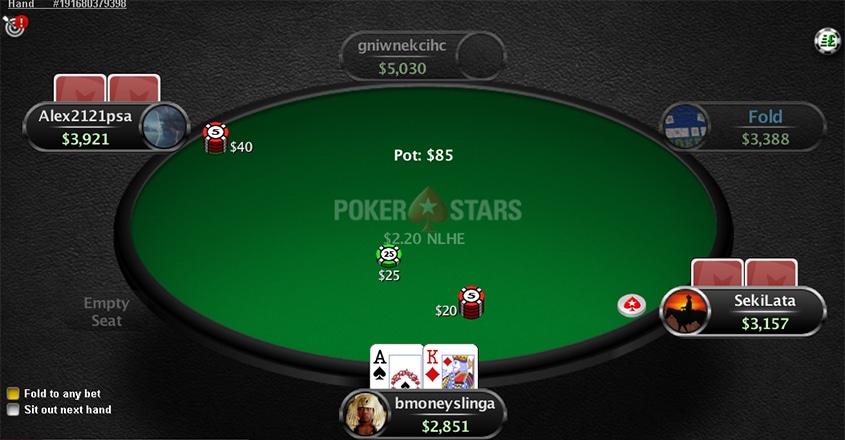
Whether you enjoy poker on a computer or enjoy poker in a casino, it’s still the same game. Players on both games bluff and bet, and receive and deliver bad beats. Most of the skills developed in one format can be readily translated into the other. However, many poker players are persuasively arguing that the gameplay between online poker and live poker couldn’t be more different. Live poker is considered a type of sport, while online poker is, for the most part, like a video game. One is real, and the other one is virtual.
In the past, the contrast between online poker players and live poker players was quite clear. Most professional poker players belonged to one specific group and completely ignored the other. Live poker players ventured online and didn’t fare too well, complaining that it wasn’t real poker, whereas online poker players showed up to live events and struggled to handle cards, chips, and game etiquette.
However, today they overlap a lot more, with top players playing both live and online. Those engaging in both need to be aware of the major differences between the two forms of poker. Therefore, we included some of the biggest differences between online poker and live poker.
Bet Size
In live poker games, you will usually encounter different bet sizes when compared to online poker, especially when it comes to pre-flop raises. In online poker games, you will find players opening for 2.5x or even 3x the big blind, whereas in live poker games you can find players opening for 6x or more, especially in the lower-stakes live poker games.
It’s not just that, though, and bet sizing is an art in itself and a whole chapter should be dedicated to it. For the moment, let’s give you a quick example of what your worst enemy and best friend is when determining the size of your bet:
- If you have used small bet sizes before the flop, you will see a lot of the players call you as the game progress;
- Big bet sizes yields the best rewards and help you gather information quickly. Big bets for the sake of collection information aren’t wise;
- Try to make strong bets or don’t bet at all as it would give information to your opponents
- Generally, you should bet 3/4 the size of the pot after the flop, providing you have the cards to back it up
- Bet 3 or 4 times the size of the big blind, and add one big blind for each limper to clear the table
Heads up Pots vs Multi-Way
In live poker games, you will usually encounter looser play in the form of poker players calling a lot more. One consequence about this trend is a lot more multi-way pots taking place in a live poker game than an online poker game where pre-flop betting typically creates more heads-up situations. It’s also not unusual to witness several limpers, in a live poker game session, pre-flop or numerous callers of a pre-flop raise, thus creating a multi-way scenario.
Folding vs Calling
Although live poker players tend to be looser when compared to online poker players when it comes to pre-flop calls, things tend to go quite differently during post-flop. You will notice that online poker players are more likely to make huge post-flop calls, with a weak or medium strength hand, than a live poker player. This means river bluffs get through more often in live poker games than in online poker games. However, it greatly depends on the situation and the player.
The main reason for this tendency is that it’s a lot easier for most online poker players to click on the ‘Call’ button as opposed to making a difficult call in a live setting. Not having to endure the embarrassment of incorrectly guessing with such calls in person make them much easier online.
Bad Beat Frequency

As poker players tend to run into more calls while playing online, many poker players experience bad beats more often while playing online as opposed to live poker. This is especially true at both micro and lower limit tables online, where the smaller stakes encourage calls with weaker or subpar hands that usually outdraw better hands.
Online bad beats are further enhanced by another major difference between online poker and live poker, that namely being the pace of the game, online tells and the stakes being played.
The Pace of the Game
One of the most notable differences between online poker and live poker is the pace of the game. Online poker is played considerably faster when compared to live poker, and those who prefer online poker will find live poker extremely slow and too tedious to tolerate.
In live poker, you will be dealt between 25 and 35 hands every hour, whereas with online poker you will see over 60 hands every hour at any given table. Online poker also provides the ability to multi-table, allowing you to play a lot more hands within an hour than cannot be matched by live poker.
Live Poker Tells vs Online Tells
Another noticeable difference when playing poker online is not being able to physically see your opponents, and this means physical tells gets omitted while playing online poker. This also greatly affects table talk, which is vitally important in live poker games but one that becomes a non-contributing factor while playing online poker, aside from the chat box.
Professional poker players at a live poker event state that it’s much easier to profile their opponents during live poker, especially inexperienced players who tend to provide loads of information very quickly during a game.
Relative Stakes
The last comparison between online poker and live poker is the stakes. For various reasons, an online poker game played at the same table limit as a live poker game will often feature more skilled players. For instance, a live poker game with $1/$2 blinds usually won’t see many skilled opponents as you will find in a typical online game at $1/$2 blinds. This is because there are plenty of lower-stakes games available online that you won’t find in live poker.

Poker Mentality and Mind Games
Understanding poker psychology is undoubtedly a crucial part of poker. Playing mind games with an opponent can sometimes make or break the game but is more difficult to do with online poker for obvious reasons. Playing on the web means you are in the comfort of your own home and there is no face-to-face interaction so visual cues are not a factor.
So is bluffing possible online?
We’ve all heard the term “bluffing” and that’s not to say bluffing doesn’t come into play at all because you can still use all-in tactics (discussed later on in the article) and even stir some trouble up on platforms that have live chat.
The mental game of poker is a whole beast of its own but basic mind game tactics can be segregated into three main categories:
- Offensive – This can refer to playing around the fact that you have a good hand or purposely tilting an opponent.
- Conservative – When you are nearly certain you will win the round you can bait people to contribute more to the pot by acting weak.
- Defensive – When your seemingly decent hand becomes weak due to poor luck on the turn or river you can bluff your way through to scare off opponents.
As you play more and more poker games whether it’s online or on live tables you’ll gradually get to know the community.
OPA Reminds Information is power in poker and being familiar with the players, whether offline or online will give you considerable advantage.
If you’re serious about winning money and not just playing for fun, it’s a good idea to familiarize yourself with regular players and pick up on any behavioral patterns so you know the best way to attack their psyche.
But is it difficult? Not at all and here’s why:
Although head-on mental attacks in the poker community are not well received among the majority of players and spectators, it can definitely help you win a game and save you from a grim situation. To most individuals this is more important than good sportsmanship when a huge pot of money is on the line.
If you’re wondering what constitutes an attack…
Attacks can range from simply distracting them during their turn to directly taunting another player which is generally done to tilt someone, especially after a recent loss.

What does tilt mean?
‘Tilting’ is psychological phenomenon describing a downward spiral of making bad plays due to emotional influence and this is commonly seen in not only poker but all sports and even games.
“As long as you are human you are going to tilt. So the main issue here is controlling the extent to which you tilt.”. – Nathan Williams
If a player has recently lost a huge pot, then during the round after they are prone to tilt which can be catalyzed by mental attacks. Although in most cases tilting is likely to happen even without intervention.
Here’s one of the things you’ll be surprised to learn.
One of the most common things you’ll see in a poker game is when players shield the fact that they have a great hand and play it quietly. The intention for this is to slowly increase the pot to as high as possible with subtle check-raises.
Now, the key here is to do it subtly. Amateurs often make this following mistake:
It is actually quite obvious when this happens as it’s so common; a raise too high or a wrong all-in play could unnecessarily cause players to fold which in turn jeopardizes your potential winning.
If you ever find yourself in a sticky situation where your opponent probably doesn’t have a strong hand but it’s likely it’ll beat yours then it may be the right time to pull out a defensive bluff.
But don’t be fooled.
Of course, this will only work if the other player doubts their own hand so if you’ve been playing the whole round with only checks and small raises then they probably will try to call your bluff.
How should I deal with mental attacks?
As famous micro stakes poker player Nathan “BlackRain79” Williams puts it, “As long as you are human you are going to tilt. So the main issue here is controlling the extent to which you tilt.”. That goes the same for mental attacks. Everybody has to deal with mental attacks whether it’s inside the game or out.
BUT… the trick is to not think of them as attacks.
There are several ways you can minimize the effect of other players trying to play games with your psychological state and while some techniques may not work that well you, we encourage you not to give up and put emphasis on the techniques that are more effective.
Warm Up
Playing poker at any level let alone at a respectably high one can take a lot of time and energy out of us and so unintentional inconsistency can be a major problem especially for beginners. When you open up the poker application on whichever device you choose to play from, it is easy to simply sit down and start playing.
However, nobody is protected from having a multitude of bad hands at the beginning and that can in turn affect our ability to gauge and play like we can after a few casual hands. Here are some of the techniques you can use at home to warm up:
Play Some Free-Money Hands
It is easy to play free-money (also known as play money) rounds on websites or even at home to get yourself in the mindset of making high level split-second choices without the risks of losing money and lessening the effects of tilting.
Watch Clips or Movies of People Playing
For some players, observation is a form of meditation and whether they are watching professionals or beginners play, observing others can be a fantastic way to ease themselves into the mood for playing in a way that is consciously detached and independent from the influences of sitting down in a cold seat and feeling the pressure of making a good impact with their first few hands.
Appreciate Variance
Have you ever felt like you’re the only one who gets a cold deck? It’s not just you.
Even as we try to not tilt or shield ourselves from making bad plays, tilting is inescapable and it only takes a split moment to see the difference between things going well and streaks of losses.
However, experiencing this is all statistically part of the norm and we are wired to spot the negatives especially when we want to improve (see ‘Take Notes’).
How many hands should you play to determine your skill? 1,000? 5,000? 10,000?! At the very least, players should try playing 30,000 to 40,000 hands before they even make a judgement about their win consistency.
AND EVEN THEN the nature of variance with all the factors involved mathematically (not to even mention the emotional impacts!) is simply too difficult to reliably discern your skill level. When you’re constantly making mistakes and experiencing what feels like a unique, all-time “this has never happened before!” type of low. Just remember…
This varied experience is completely normal and is why we recommend:
Playing for the Long Term
When surveying a country about their political party preference it wouldn’t be effective to source from only a couple small cities. In the same respect, if you’re always thinking about whether you win or lose, you would never receive the true, accurate data.
As we mentioned earlier, the effects of variance can give us not only a handful but a whole ream of losses with which to make bad judgements from and this is why:
Instead of focusing on whether you win or lose during your sessions, it pays to put your time and energy into whatever you’re trying to practice at the time.
Think BIGGER!
Whether it’s a specific technique, bluffing, level of aggressive plays, your observation of other players or a whole host of other facets of poker you can enjoy improving. This will be time better spent than counting the results of a small-minded sample of your true ability.
So how does this help with defending against players throwing mental plays at you? Simply put:
This adds to variance which is yet another reason why you should remember that the performance of hands and frequency of other players seeming to pull something over your eyes affects your play.
Learn to enjoy the process.
The progression of improving smaller facets for a lot of players is a brilliant way to counter the effects of psychologically offensive players by not even acknowledging the mental game they are trying to play with you.
If you’re more of the analytical type, try this technique:
Record Your Plays
That’s right – good old-fashioned note-taking, or typing, if you will. Some players even record their screens and watch it back as this is a great way to detach yourself from the game and analyse properly (especially after games where you find out their hands) at which point other players decide to make the decisions they do.
This takes time but read on to find out why it is worth it:
Granted this can be a time-consuming process but for the analytical player this is a great way to methodically work through people’s mental attacking by understanding the process and reasoning behind people’s plays.
Needless to say, the psychology of poker can go deep, involving methods that professionals pioneer or in some cases don’t even acknowledge but one thing is for sure…
Mental attacks are a part of the game that you can use, learn from and defend against given methodical practice of the above.
Just remember to refer back to the basics and remember that being attacked or being “tilted” is all part of the game. Armed with the techniques above, now you can mitigate those effects and attack back with a calmer state.
Advanced Poker Tips to Improve Your Game
When you’re warmed up and eager to surprise some ready-and-waiting players with your newly learned mental game skills, step back, take a breath and…
Take It Slow
Some players will sit at the same tables for a long time and so it quite literally pays to be patient and scan the tables first, taking note of any available stats that may be of use to your strategy.
- Is there a high percentage of players that see the flop?
- Is there a high turnover of players?
- What is the average pot size?
- Are tables better at certain times of the day in your preferred region of play and unsuitable during others?
- Has a player that you particularly enjoyed playing with previously sat down? Or conversely a player that you had an unpleasant experience with?
These are just a couple of the more obvious things you can observe looking at the lobby of your chosen online poker application.
Spot the “Fishes”
Occasionally you will see during games of both beginner and sometimes even advanced levels what players tend to call a “fish”. These outliers constitute a small selection of weaker poker players that usually give away their inexperience even when lady luck has favoured their bold style of playing for most—or enough—of their poker games to bring them to where they are now.
Now… fishes aren’t always unpleasant or throw the game and everybody was one at some point of their poker life whether they intended to or not, but it is still important to spot them as early as you can so that you can amend your strategy and be more aware of and closely connected to the flow of the game.
Use these 5 simple signs to spot a fish:
Do the Math
The inevitable hurdle of getting better in any game or sport eventually comes down to the difference of singular moments and it is in those occasions where the mathematics of poker can mean the difference between a win or lose.
If you’re wondering how to work out odds in poker, number crunching may be appealing to some and outright dreadful to others, BUT…
It is at the very foundation of the game and a necessary part of higher levels of play if you want to advance up to the higher stakes and make your mark there.
Know the Implied Odds
Speaking of doing the maths, implied odds are essential to helping you determine when risk is worth it. Be it a 90% risk or only a tiny 1% risk…
RISK is still exactly that –a risk.
Losing five, six or even seven figures because of a 1% chance is a dreadful feeling for any poker player but it has happened all too many times on live tournaments that it really drives home just how important it is to acknowledge risk and calculate the implied odds.
“What do implied odds in poker mean?” you may be wondering… Simply put, if you can win $100 with a raise of $50 then the implied odds are 100/50 or 2/1.
Implied odds are a useful concept to grasp because of their being frequently referenced to in advanced poker tip books and articles but you should always pair this with foundational poker knowledge and strategies for disregarding them just for implied could be a regrettable move and one that is thankfully less visited as you play more and build up a repertoire of varied poker experience.
There are plenty of top poker strategy guides out there for all levels of poker players ranging from books to online courses showing in-depth statistics such as this brilliant summary from PartyPoker:
You’ll have a:
- 54% chance to minimally make a straight proceeding the open-ended straight and flush draw flop.
- 35% chance to make your post-flop flush needing only one card.
- 32.5% chance to pair one of your guys on the flop.
- 31.5% chance to successfully fill an open-ended straight after the flop.
- 16.5% chance to complete your gutshot straight awaiting two cards.
- 12% chance of flopping the same suit of your suited cards.
- 11.8% chance to flop a set with your pocket pair.
- 9% chance on a 10-handed table of someone getting pocket K’s or A’s.
Use Small Ball Poker
Reading online about poker you will have undoubted come across a long-time proponent of ‘Small Ball’ who is also one of the most prolific, well-known players in recent times and arguably in history, Daniel Negreanu. From the man who literally came up with the name, there is more than just merit that comes with this style of play.
A respectable level of play is generally required to use a Small Ball strategy as it relies on the player’s ability to play consistently following various elements of the strategy. There are a plethora of guides available out there on Small Ball Poker from professionals to world champion poker players alike.
Just want a test sample? We’ve got you covered with the basics below:
Small Ball Poker comprises of the following methods:
Improving Focus
Novice and even advanced players often forget about the loss of focus that occurs during prolonged poker sessions and so keeping your concentration at the table is a huge advantage as it only takes being slightly less focused than your opponent for a single bad judgement to lose a pot.
Analyze Players
In poker there are so many facets that can be studied, be it the nuances of tilting, traits of player archetypes or the methodical breakdown of plays. By watching others and weaving in what you’ve learned to this point, players can achieve immense value when deconstructing other whether it’s in person, spectating online or studying videos of players available for free online on sites like YouTube, and particularly at PokerStars’s School Series.
Be Unexpectedly Unexpectable
Isn’t it great when playing in your specialist style just ‘works’… Even if things are all puppies and rainbows now though, on the road ahead though you’ll eventually meet some talented sharks that can break down your pattern early and pretend not to know; this is why it pays to vary your approach as to keep them from working out your game and before you think it can’t be done – just think how quickly you could tell if someone else was using exactly the same strategy as you.
Play Aggressive
Popular amongst novices and advanced players if played well, if you have nothing to play on the flop or missed draw, it’s likely your table adversaries will equally have nothing and so upon receiving a playable hand it may be time for the courage and swing your way through.
Use Blocker Bets
Before learning this one – the aforementioned aggressive players of any skill will spot your vulnerable moment when they see the small river bet so this shouldn’t be advised against perceptive players or those who already know your weaknesses.
Having said that, a minute bet can be just enough to squeeze just that bit of extra cash out of your opponent’s average hand unwilling to go large. This strategy is usually fine as long as the blocking bets don’t exceed your value bets.
These can be great on the turn to carve your opponent’s chance from the river.
Use the Squeeze
Have you ever been forced or rather ‘squeezed’ out of a pot? This is for you:
After players have committed their bet, raise twice nice and early with your, let’s say “less-than-impressive” hand and watch everyone fold.
Obviously it’s not always that simple and if the second player re-raises you may well be up against a good hand with something to lose. Your raise needs to be enough to frighten off other players so it can be a strong move at the right time whether it’s to actually force other players out the pot or just to loosen up your tighter game.
But the lesson is this:
Make sure you’re willing to lose that bet because you’ll be in a sticky spot if they call or see this move a second time regardless of how legitimate the first was.
Lastly, No One Wants to Play with an Asshole
To finish off, we give you the most effective, simple yet somehow advanced tip there is.
This is such an obvious point that we considered leaving it out.
But unfortunately in online poker you will inevitably come across some of the largest ego’s in your corner of the state and if you don’t want play against that person then you certainly shouldn’t become them and add another one to the world.
Start by having a positive outlook and channelling that energy towards the game and hand at the time as opposed to what ‘bad luck’ you’ve had this round and trust us: EVERYBODY will be best off for it.
When to “All-in” and When to “Fold”
Have you ever been in a position where you don’t know if you should all-in or fold? A huge part of the game is knowing when you should make these plays which can win you the most money and also help you minimize your losses before a round spirals out of control.
First things first. What does going all-in mean?
This term simply refers to when a player decides to bet all their chips on their poker hand. In general, poker all-in rules state that a player can not be forced out due to a lack of chips.
For example, if player A all-ins with 5000 chips but player B only has 2500 chips then the game will still continue but player B is only eligible to win a maximum of 2500 chips from player A.
In a complex multi-player scenario different pots can be created and it can get confusing for a beginner, but you don’t need to worry about this at this stage.
When should you go all-in?
This is a very hard question to give a general answer to. It mostly depends on the situation you are in but more specifically factors such as those listed below (in no particular order):
The Theory of Risking It All
The most standard reasoning and best time to play an all-in move is when you are almost certain you have the strongest hand and it is very likely that your opponent will call.
This is the lowest-risk and highest-reward situation you will find yourself in. It is important that you use your own deductions to determine whether they will call because if they don’t and you scare them off then you’re losing potential money you could gained through a simple raise instead.
So we’ve briefly covered one side of the coin. What about folding?
Folding is a move purely for minimizing losses which is sometimes done straight away on the draw if you receive a poor starting hand such as a 2 and 7. It’s also common to fold further on in the round if the game doesn’t go how you wanted it to and there’s a low chance of winning. A good start is learning all the poker hands to fold.
Worst Poker Hands
Here’s a list of the top 5 worst possible starting hands in standard poker:
- 2 + 7, 2 + 8
- 3 + 7, 3 + 8
- 2 + 6
- 2 + 9, 3 + 9, 4 + 9
- 2 + 10
As a general rule, you should fold if you receive these at the start of the round. This is not to say it’s impossible to win with these combinations (as demonstrated by many players like Doyle Brunson) but it will be a difficult game as the odds will definitely not be in your favor. If you’re not an experienced player, just play it safe and fold.
The art of folding is down to your gut and analytical skills. Other than learning what hands are worth playing for you need to try and read what the opponents are trying to do. As you play more and more games, it becomes extremely obvious when someone has a good hand when they instigate a series of check-raises to pump the pot. Be smart and spot these early signs to cut their winnings.
It’s also important to keep an eye on your chips because if you run out then you’re out of the game. You can take more risks when you’re the chip leader of the table, but if you end up on the low end then fold mediocre hands and only play for ones with a high probability of netting you the win.
Folding is such a simple play, yet many players are reluctant to do it which ultimately causes them to lose a lot of the time. No one likes the idea of folding a potential winner, but unfortunately a large part of poker is based on luck and you can only do so much to deduce what will happen.
Remember, you should never feel the need to all-in just because you’ve invested so many chips in the round already. If there’s a slim chance of you winning then play the smart move and fold to cut off your losses.
The Best Poker Strategy
Poker is not a complicated game. Understanding the hand rankings and learning the basic game rules can be achieved within a short few minutes. However, that’s the easy part.
To truly master the way you play, and transform poker into a game where you can consistently make money, takes a lifetime.
For those who are just starting out with poker, it’s very important to balance the excitement and fun of playing poker with the substantial losses that can quickly accumulate if you have no idea what you are doing.
Therefore, it is crucial that you obtain, study, and memorize a poker strategy before joining a cash game. Unfortunately, you won’t come across the best poker strategy by doing a quick search online. There are several aspects in poker that you will need to combine to formulate the best poker strategy while playing against other poker players. Fortunately, we narrowed it down to 5 of the best poker strategy tips to ensure you stay afloat while playing poker.
Be More Aggressive
In poker, the only way to win is to bet, and the best way to win a significant amount is to bet a significant amount.
Poker is a game of focused, timed aggression. As you start mastering the basics of the game, you’ll eventually learn when the aggression needs to be increased. Most inexperienced players are too cautious. They usually check when they should place a bet, and call when they could have raised.
On great opening hands, such as A-Q or A-K, you must play more aggressively. These are fantastic cards to start with and you need to ensure that you push the players with weaker hands and force them to match your bet to stay in the game.
You need to make other players pay to view the cards, and push as many players out of the pot as soon as possible. The odds of winning with 6 players in a pot is a mere 17%, but with only 2 players, your odds increase to a staggering 50%.
It’s important to understand that cautious play will mark you as a weak player to others sitting around the table. If you only bet or raise occasionally, stronger players will start pushing you around as they already know you are going to cave under pressure.
Then, once you decide to make a big bet, all the players will immediately know that you have a very strong hand and will instantly fold, reducing the pot size considerably.
Always remember that aggressive play provides big pots. Once you have a winning hand, milk the table for all its worth.
Be Patient
Playing aggressive doesn’t mean that you should throw money away because you keep drawing bad hands, or going all-in with the hopes that you’ll get the desired card on the turn or river. That’s a sure-fire way to cut down on your chip stack within minutes.
OPA Reminds: Most of the hands that are dealt by the dealt will be losers. Remember that and play accordingly and only when the cards allow you to.
One of the best poker strategy tips is to fold more often than you play. For most players, this sounds like a terrible way to spend their time by merely sitting at the table and watching others play. However, always remember that most hands dealt will be losers.
If you haven’t been dealt a strong hand, fold immediately. Rather use the time to study other players and how they play. Patiently wait for the perfect situation then use your aggression to claim the pot.
Watch Like a Hawk
Like the old poker saying goes: “Play the player, not the cards.” This means that poker is fundamentally based on the situation. Your hand will either be one that is good or one that is bad in relation to the cards being held by the other player. The question is, how do you know what the other player might be holding?
The best way is to watch other players very closely and learn how they play. You can use both nervous habits, known as “tells”, such as fiddling with a ring or their chips, and the way a player plays to increase your chances of correctly guessing what they might be holding.
If they have been calling all night and suddenly makes a raise, they are probably holding an incredible hand that you are unlikely to beat, and therefore should probably fold to save yourself from losing even more money. This would not have been possible if you hadn’t been carefully studying the way that player played.
Play for the Long Term
If you apply this guide into application, by this point you’ll be well on your way to becoming a professional poker player. But until then as an inexperienced player, understand that you will lose most of the time. You’ll eventually go all-in with pocket Aces and be beaten by a pair of eights as the other player managed to catch a third eight on the river. However, don’t let these bad beats discourage you because although the odds might not always be in your favour, chances are that over the long term, your Aces will win more often against eights than not.
To successfully win at poker is a long-term project that will require thousands of hands. It’s the only way to grasp the basics fully and will take much more than just becoming an expert.
Develop Your Skills
Although you might learn a great deal from both your losses and wins, poker isn’t a game that you can only master on the tables. You can also educate yourself by reading books and blogs about the best poker strategy, such as the one that you’re reading right now.
Playing on US online poker sites is also a fantastic way to improve your knowledge and skills. However, avoid spending too much time on play money tables, as most of the players aren’t taking the game seriously, and as such, you’ll likely to develop bad habits that will only hinder your decision making when it comes to playing poker for money. Instead, stick to micro and lower stake tables to refine your strategies and always make notes as this can also help to improve your overall game play.



